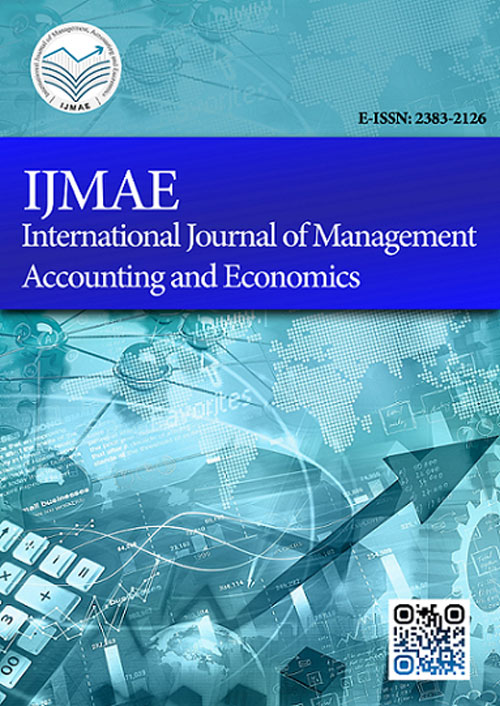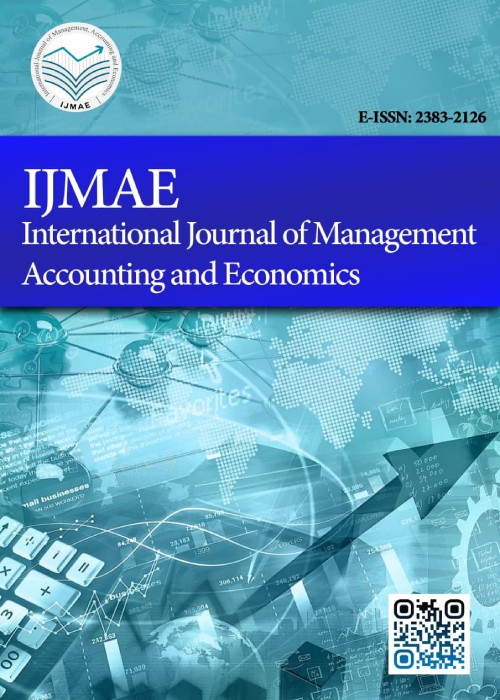فهرست مطالب

International Journal of Management, Accounting and Economics
Volume:9 Issue: 5, May 2022
- تاریخ انتشار: 1401/04/27
- تعداد عناوین: 4
-
Pages 247-267The influence of transformational leadership (TL) on employee turnover intention (ETI) in SMEs is explored in this research, including the mediating and moderating function of affective organizational commitment (AC) and job embeddedness (JE). Data was obtained from 456 workers of SMEs using convenience sampling. The numerous associations were estimated using Smart PLS structural equation modelling (PLS-SEM). The study's findings indicate that transformative leadership and ETI have a negative and substantial association. Consequently, AC and JE mediated the association between transformative leadership and employee turnover intention. Lastly, the transformative leadership and employee turnover connections are favorably moderated by job embeddedness. To improve JE and AC and reduce employee turnover, SMEs should implement transformational leadership abilities such as developing a compelling vision for the workforce, fixating on goal attainment, having conflict approaches, a feeling of belonging, and interacting on staff professional development. Leaders should employ transformational leadership traits include creating a vision statement for employees, emphasizing on desired outcomes, implementing challenge solutions, having a purpose and direction, and devoting time to team professional development.Keywords: Employee turnover intention, Transformational Leadership, Affective Organizational Commitment, job embeddedness
-
Pages 268-285The present study seeks to identify the three factors of emotional intelligence, risk aversion and locus of control over risky investment intentions, with the aim of assisting investors in making decisions that are more rational and examining the role of literacy and possible advice to investors to promote financial knowledge and understanding. The data were collected through a questionnaire and composed 219 individual investors. In order to achieve the objectives of the research, the method of structural equations modelling for direct hypotheses and hierarchical regression for indirect hypotheses were used. The results showed that emotional intelligence has no significant effect on risky investment intentions. In contrast, it was found that risk aversion can have a significant negative impact on risky investment intentions. It was also determined that the locus of control has no effect on risky investment intentions. The structural equations modeling is based on discover complex relationships between variables. Using this method helps to identify hidden relationships between components. Hierarchical regression method can also be useful to find the effects of variables. In this research, these two techniques have been used.Keywords: risky investment intentions, Emotional intelligence, Risk Aversion, Locus of control
-
Pages 286-299Livestock businesses have various risks of death that can occur due to accidents, natural disasters, and disease outbreaks. To anticipate the risks that occur, the government seeks to help farmers through agricultural insurance, including the cattle and buffalo business insurance program (AUTSK= Asuransi Usaha ternak Sapi/Kerbau). This study aims to analyze the implementation of the AUTSK program and the factors that affect the income of dairy farmers. The research was conducted in Ngajum District, Malang Regency with the consideration that this area is a center for dairy cows. Data were collected from 40 dairy farmers obtained by simple random sampling. Furthermore, the data was edited and compiled, and then analyzed using the multiple linear analysis method (which was transformed from Cobb Douglas function). The results showed that implementation of the AUTSK program in Malang Regency tended to be less attractive to farmers because the fulfillment of claims was not timely (the period of disbursement of funds was too long). Farmer education, livestock ownership and the cost of concentrate feed have a significant effect on the income of dairy farmers. Government needs to re-evaluate implementation of livestock insurance so that farmers can continue their business. Limitation of this study is difficulty of separating cost of production facilities for each cow, so that the expenditure for lactating cows is also difficult to calculate correctly.Keywords: income, livestock insurance, Implementation, Dairy cattle
-
Pages 300-321Generally, the purpose of this study is to extract leadership indicators at the time of crisis and specifically, to identify the most effective indicators during the corona crisis. In the present study, a mixed-methods approach (qualitative and quantitative) has been used. In the qualitative part, the research approach is exploratory, and in the quantitative part, it is descriptive-survey. In the qualitative phase, initial data was obtained from reviewing the literature and coding of previous researches and data analysis was performed using a theme analysis method in Maxqda 2018 Software. In the quantitative phase, to prioritize the themes obtained from the literature review, they were given to 10 leaders of active international corporations in the form of AHP questionnaire. Finally, using Expert Choice Software, the weights of the data were calculated and they were all prioritized. Our investigations have shown that the indicators of crisis leadership can be prioritized as strategic awareness, empathetic communication, analytical thinking, facilitation skills and flexible guidance. The current research is the first one conducted with this approach, especially in Iran, and its results can also be considered by managers in other organizations as well.Keywords: Business Leadership, Crisis Leadership, Corona Pandemic


